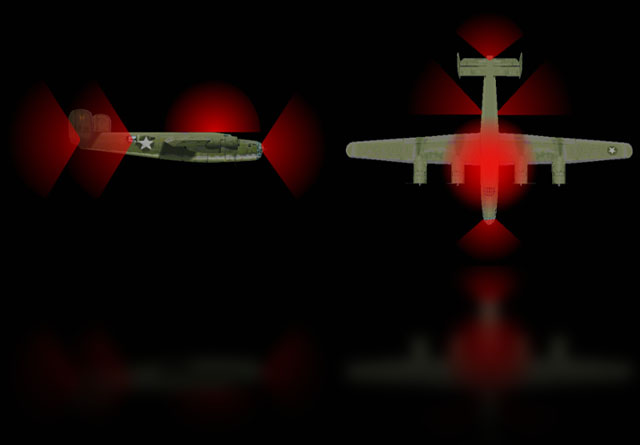
European Air War

Consolidated B-24D Liberator
Although the B-17 Flying Fortress was already in production by 1939, the Army Air Corps requested the design of a more modern bomber with better speed, range and operational altitude. The result of this request was the Consolidated B-24 Liberator, the most widely produced bomber of the war by any nation. The lead Consolidated assembly line was in San Diego, but numerous other factories worked to meet the subsequent demand as well, including divisions of aviation giants North American and Douglas; even the Ford Motor company lent a hand. Combined, these factories delivered 18,188 bombers during the war. In addition to the U.S. Army Air Corps and the U.S. Navy, the B-24 was used by Great Britain, Canada and Australia. The French had also placed orders, but they were not delivered before the capitulation in 1940, so they were diverted to British use. The Liberator served in the European, North African, Middle Eastern and Pacific theaters.
The design of the B-24 was innovative for the era, with laminated leading edges for the wings, which increased both the carrying capacity of the aircraft and its high altitude performance characteristics. Unfortunately, the elongated wings were also very susceptible to battle damage, which made the aircraft less than popular with its crews despite its other strong points. The better characteristics of the B-24, which included a 2,850 mile operating range and a maximum speed of 303 mph, were oriented toward mission accomplishment, not crew survival.
Consolidated B-24D Liberator
Wingspan: 110 ft. 0 in.
Length: 66 ft. 4 in.
Height: 17 ft. 11 in.
Engine: 4 x Pratt & Whitney R-1830-43 Twin Wasp rated 1,200 hp
Loaded Weight: 60,000 lb.
Maximum Speed: 303 mph.
Service Ceiling: 32,000 ft.
Combat Radius: 1,000 miles
Armaments: 8,000 lbs. of bombs, 11 x .50 cal. machine guns
Defensive Fire Arc:

This material was included in the original 1998 release of European Air War by Microprose.
